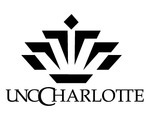How
does
slavery
still
effect
race
relations
in
today’s
society?
We
must
look
back
on
the
past
to
build
a
stronger future.
We
cannot
build
a
monument
that
will
coarsen
the
historical
understanding
of
slavery,
nor
bury
it
under
national
myths.
We
must
avoid
building
a
monument
that
invokes
nothing
other
than
a
reflection
of
the
structure
it self.
It
needs
to
have
an
aesthetically
pleasing
form
but
share
a
deeper
meaning
than
just
a
s it e
marking.
A
landmark
celebrating
the
destruction
of
an
old
way
of
thinking
may
be
the
best
way
to
appreciate
and
remember
slavery’s
demise.
A
re construction
of
the
old
may
only
encourage
the
public
to
forget
what
occurred
in
the
past
by
creating
a
new
idea
to
cling
to.
So,
we
must
embrace
the
entire
history
of slavery.
Their
struggle
would
not
have existed
if
they
did
not
begin
free,
and
emancipation
would
not
have
occurred
if
there
was no
struggle.
A
deep
path
carved
into
Washington
D.C.’s
historical
land
will
scar
the
land,
leaving
a
constant
reminder
of
slavery.
An
open
wound
will
leave
room
for
memories
and
reflections
to
fill
it.
Having
even
more
of
an
effect
is
the
road
a
path
will
freely
cross
in
order
to
connect
the
memorial
together.
The
memorial
is
made
up
of
three
main
concepts.
The
African
people’s
original
freedom
and
livelihood,
which
then
intersects
with
their
struggle
through
slavery,and
ends
with
path
of
emancipation
and
current
life.
The
original
freedom
path
is
parallel
with
the
shore line
of
the
Potomac
River.
Open
to
nature,
and
unrestrained,
a
visitor
enters
into
the
arrangement
of
trees
and
chooses
their
own
path
to
arrive
in
the
next
section.
Calm
water
lines
each
edge
of
the
path
signifying
life
and
purity,
while
enforcing
circulation.
In
this
first
path
I
wanted
to
solidify
the
fact
that
African’s
lives
before
slavery
was
as
free
and
open
as
they
needed
it
be.
With
a
constant
view
of
the
river,
again
the
fact
of
life
is
assured
to
the
viewer.
At
the
end
of
the
path,
a
dead
tree
is
seen
at
the
end
of
a
row
of
straight
trees.
This
signifies
the
beginning
of
slavery.
Africans
(the
trees)
were
stricken
into
a
life
of
conformity
until
they
would
eventually
lose
their
feeling
of
life
(leaves
on
the
tree).
With
such
an
abrupt
and
unexpected
ending
I
wanted
the
viewer
to
have
a
feeling
of
surprise
and
uneasiness.
Once
the
visitor
enters
into
the
second
pathway,
in
line
with
the
Martin
Luther
King
Jr.
Memorial,
they
immediately
come
upon
another
dead
tree,
but
this
one
is
encaged
within
metal
scaffolding.
This
signifies
the
Africans
torn
spirit
being
shackled
and
forced
into
a
life
of
constraint.
The
path
decreases
in
elevation
along
its
entire
length
to
signify
a
decrease
in
humanity,
a
negative
event.
Concrete
forms
roll
over
the
cut
away
landscape.
Jagged
and
abrupt
angles
create
uneasiness
and
vulnerability.
Random
metal
rods
project
from
the
ground
plane
confining
the
visitor
along
a
path
implied
by
dangerous
decisions.
At the
end
of
the
path,
the
first
signs
of
emancipation
are
seen
when
the
metal
forms
are
casted
off
to
the
side
and
less
of
a
problem.
At
the
end
of
the
path
a
visitor
comes
upon
a
large
staircase.
The
emancipation
path
begins
parallel
to
the
path
of
their
original
freedom,
signifying
they
are
again
free
and
on
the
right
path.
A
staircase
increases
in
elevation
until
it
levels
out
with
the
ground
plane.
This
symbolizes
the
struggles
the
slaves
had
to
face
even
after
emancipation.
While
the
path
to
freedom
may
have
begun,
its
still
an
up hill
struggle
until
they
finally
arrive.
At
the
end
of
the
staircase
begins
a
wooden
ramp.
This
concludes
the
three‐
step
concept
I
first
introduced.
Wood
represents
their
ancestors.
Visitors
are
supported
along
their
path
by
the
original
Africans (trees).
Beneath
the
wooden
walkway
are
two
metal
beams
that
represent
the
slaves
victory
over
oppression.
Their
struggle
is
not
gone,
but
instead
it
rests
beneath
them,
always
apparent,
and
acting
as
their
backbone.
Capping
the
end
of
the
path
is
a
circular
pedestal
that
is
encircled
by
wooden
beams.
This
not
only
allows
for
a
free
360‐ degree
view
of
the
site,
but
it
also
is
strengthened
by
the
nature
that
originally
made
up
their
lives.
A
three‐step
program
of
freedom,
oppression,
and
emancipation
not
only
acts
as
a
history
lesson,
but
also
best
represents
the
how
and
why
of
slavery
sometimes.



